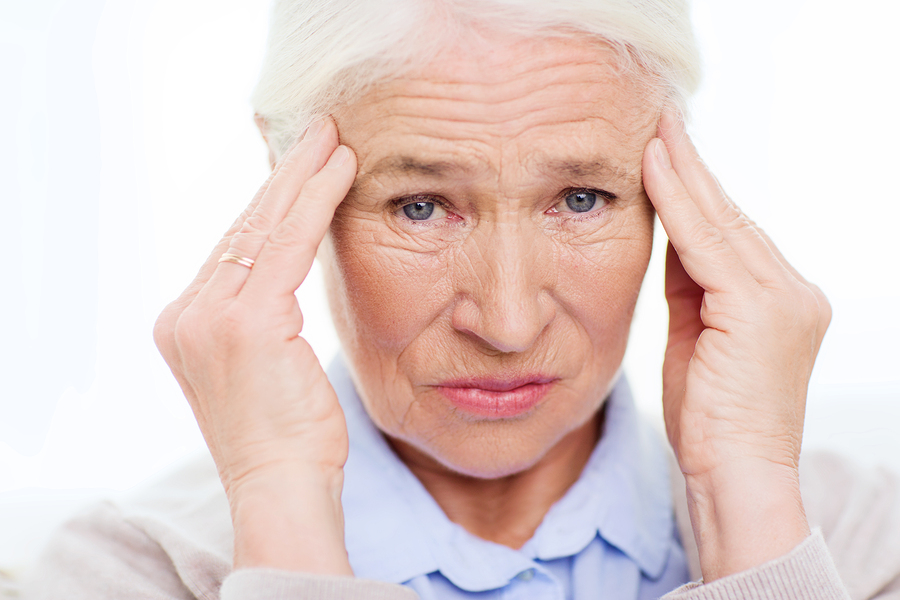How to take control of your migraines
Migraines are the most common type of headache that GP’s see in their surgery
It is estimated that up to 8 million people in the UK are affected and it is reported to be the most widespread long-term neurological condition we have in the UK. Although what causes migraines is not yet completely understood, researchers have discovered that those people with a family history of migraines are most likely to suffer.
Compared to men, more women tend to suffer from migraines with estimates put at 18% of women being affected compared to 8% of men. Although the reason is not clear why this should be, during the menstrual cycle less oestrogen is produced and prostaglandin (a hormone-like substance) is released which may be the cause of migraine in some women. Approximately 10% of women have reported being affected by ‘menstrual migraines’.
The World Health Organisation has a ranking system for worldwide diseases and places migraines at 19th on the scale. It is therefore really important to know what to do when a migraine starts and how to control the symptoms.
Recognising symptoms
It is important to recognise your symptoms as they are dependent on which migraine you may be experiencing. There are typically three types of migraine – one with aura, one without aura and a migraine aura without a headache. Less than 25% of people experience migraine with aura and the aura may not even occur every time.
The most common aura migraine lasts around an hour and typically involves visual or sensory disturbances or sometimes both occur simultaneously. It is believed that electrochemical changes in the brain can trick the body’s immune system into sending response cells which result in the widening of blood vessels which then cause the aura. A person suffering an aura migraine can experience numbness or loss of sensation and facial tingling which can then extend into the arm.
Those who suffer a migraine without aura will, 85% of the time, experience severe and intense pain. Usually, the pain only manifests itself either towards the front or side of the head and may be accompanied by a feeling of nausea. The pain will be made worse by any physical activity.
Typically, people inaccurately diagnose migraines and can believe them to headaches due to tension or infected sinuses. In fact, approximately 47% of us can be confused by these; however, the symptoms are different – sensitivity to light is a good indication of a migraine and less likely to occur with other headaches. A sinus infection is usually the reason for a sinus headache and the pain with a tension headache pain is usually on both sides of the head where it will only be on one side with a migraine.
Treating the symptoms
Luckily there are a few ways to treat the pain associated with migraines. Pain relievers, triptans (specifically for migraines) and anti-nausea tablets can all be used to help fight a migraine. Over the counter painkillers such as aspirin or anti-inflammatories like ibuprofen can help and anti-nausea tablets can be taken alongside them.
For those migraines with pain that won’t ease by taking common painkillers, your GP may prescribe a migraine-specific medicine called triptan. Triptan functions by actively contracting the blood vessels in the head along with obstructing the passage of pain to the facial sensory nerves.
Lying in a dark room, or a cold compress held to your head may relieve some of the pain, alongside your medication. A dark room works well as it will help against light sensitivity and help you rest too. It has also been reported that 77% of those who have tried cold therapy have said it relieves migraine pain, this works because a cold compress or ice pack works will cool the blood moving through your vessels.
How to stop migraines reoccurring
Learning how to recognise why your migraine occurs is the first step to controlling it. It can be tricky to identify why your migraine happens in the first place but there are ways to minimise the risk.
Something that is said to increase your risk of having a migraine is called a migraine trigger. The trigger may start the process that leads to a migraine but does not cause a migraine itself. If you are able to work out what triggers your migraines then you may be able to stop them occurring in the future. Dehydration, caffeine, food additives, alcohol, lack of sleep and stress are the most common migraine triggers.
This article has been written for adults displaying symptoms of a migraine. Please visit the NHS Choices website for information on headaches in children
Further information and sources
Migraine – NICE Clinical Knowledge Summaries
Migraine – NHS factsheet
The American Migraine Foundation
“How common are headaches?” – The World Health Organisation
The Migraine Research Foundation
“Targeted neck cooling in the treatment of migraine” – NICE
Disclaimer
All content on Silversurfers.com is provided for general information only, and should not be treated at all as a substitute for the medical advice of your own doctor or any other health care professional. Silversurfers will not be responsible or liable for any diagnosis made by a user based on the content on www.silversurfers.com and we are also not liable for the content of any external websites or links from or to Silversurfers to any other websites. Please always consult your own doctor if you’re in any way concerned about any aspect of your health.
Melina - Assistant Editor
Latest posts by Melina - Assistant Editor (see all)
- Top tips for hay fever sufferers - April 14, 2024
- 4 Homemade Sweet Treats for Easter - March 24, 2024
- The invasion of the duvet: the ’10-second bed’ - February 20, 2024
- Iconic Album Covers of the 1970s - February 16, 2024
- A tribute to Bob Marley - February 5, 2024





















